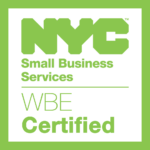

Choosing the right keywords and providing unique, meaningful content will do wonders for your search results.
To rank high on Google and other search engines, you need to know some website copywriting best practices that put customers first. Positioning your business around the needs of your customers and including human examples based on your real-world experiences will reward you with higher rankings.
That’s not to say that you can ignore the technological aspects of effective website copywriting, which can help search engines understand what your business is all about. But this is just one part of the process, and it involves the strategic use of the words and phrases—known as keywords—that telegraph what your business does.
Before you even start copywriting, take a little time to consider questions such as, what words and phrases are your direct competitors using? What websites come up when you search for keywords you think apply to your business? Lots of keyword research tools are available these days, but you should be able to decide what’s relevant for your business, if you take the time to find out.
Once you make a list of what keywords you should be using, set it aside for the time being.
Like we said earlier, valuable, experience-based content is more important. One of the biggest mistakes you can make is overusing keywords in your website copywriting. So we recommend first crafting the best message you can to address your audience’s needs. If your copywriting is clear, concise, and compelling, people will stay on your website longer and engage with your brand more—and that will improve your search results.
According to Google, helpful content is one of the most important factors in improving your search engine ranking. Once you’re satisfied with your message, then you can review it against your list of keywords. If the right keywords are covered, great! If not, try to add them in a natural way.
If you think generative AI can solve all your website copywriting problems, think again.
In addition to sounding inauthentic, Google will penalize you if your site is short on real human experience. To meet Google’s guidelines for experience, expertise, authority, and trust (E-E-A-T), be sure to:
Most experts agree that throwing a keyword once or twice every hundred words or so will help optimize your rankings. Others say that it’s enough to use your main keyword once—as long as it’s in the first hundred words of copy on a web page. Either way, don’t overuse your keywords!
Use relevant keywords in meta tags and site urls.
Meta titles are the short headlines you see when you review search results, and meta descriptions are the short summaries right underneath. Keep your meta titles to 60 characters and descriptions to 160 characters. For your urls, follow a simple naming convention that moves from broad to narrow categories, such as “yourbusiness.com/productline/keyword”.
Strategically linking related pages within your website (such as blog posts) and external links from reliable third-party sources add credibility and give search engines more reasons to rank your site higher.
If you have a new copy project or creative problem that needs solving, please reach out to us https://bouncemarketingconsulting.com/lets-talk/
BOUNCE onto some great ideas with our newsletter, BOUNCE Ahead.
Sign up now for monthly motivation around effective branding, design, and copywriting.

The buying power of Hispanic Americans has grown from $210 billion in 1990 to $3.4 trillion today. For many marketers, the 62 million Americans who identify as Hispanic are an audience worth targeting directly. Read More

Smart marketers know that a design approach aligned with their brand’s core identity, values, and audience is the best way to attract and keep customers. Read More
We are a Minority- and Women- owned business enterprise certified with the Port Authority of New York/New Jersey, New York State, and New York City.


© 2024 Bounce Marketing & Consulting. All Rights Reserved.